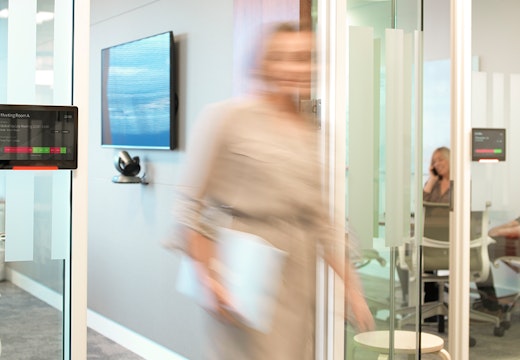Trends that shape the Condeco roadmap for 2017
From the second revolution of cloud-based services to the changing expectations of how B2B technology should behave, Condeco discusses the trends it believes are driving the workforce in 2017
During September and October of 2016 Condeco spent time talking to clients across the world. The objective was the get their view on business objectives, the trends they’re seeing in the market, and suggestions they have for improving Condeco products.
Condeco exchanged the themes that drive its thinking, for an outside perspective of the market, and what is happening behind the scenes in organisations. From this a number of topics were raised from creating experiences, to the shift from product to service.
Products are becoming services
Physical products are being replaced by digital services. This is most apparent in the industry of music. Music was bought on vinyl, which slowly became obsolete with the rise of digital CDs, and eventually physical recording media got almost completely replaced by digital files.
The rise of the data cloud, meant that services such as Spotify replaced the concept of ownership altogether. People can subscribe to this service and the list of music available to them, on demand, is almost unlimited.
A similar process has evolved for television. I grew up in the 1970s with three channels. Today I subscribe to services such as Netflix or Amazon Prime, and watch what I want, and when and where I want it. Watching television doesn’t even require a T.V anymore, nor is it restricted with time constraints.
There are a number of other physical products which have been replaced by on-demand digital services, that disrupt and reshape whole industries. There’s an interesting notion that Kevin Kelly, Author of The Inevitable, Understanding the 12 Technological Forces That Will Shape Our Future, calls ‘dematerialisation’. I can now access a record collection that, in the decade I was born, would probably have filled several large houses, on a push of a button on a device I can carry in my pocket.
With processing power roughly doubling every two years (remember Moore’s law) our ability to store and process data is growing exponentially.
But where does Condeco come into this? Our meeting room booking software replaced physical products and manual booking processes, and simplified a number of lengthy tasks into one holistic solution. Our digital meeting room screens replace the need for analogue room and desk signage, and our Wayfinder screen replaced manual boards. Our workspace occupancy sensors replace the need for manual occupancy checks.
Now, we have adapted to the second revolution of cloud-based services, and we offer a model of Software as a Service (SaaS) as clients decreasingly want to own and operate our solution.
We are not stopping here, Condeco are looking toward the next challenge of scalable, multi-tenanted, cloud-based, on-demand services that help organisations measure and manage their workspace without an increased demand on their own IT services.
Consumer services shape B2B expectations
A new world of disruptive, digital services emerging, which means the expectations of B2B software is changing. A few years ago, many of the conversations I had with clients revolved around more features, more process, more business rules. Now clients are focused on how they can create services that are as simple, responsive, and integrated to help staff quickly get what they need, so they can focus on core tasks.
Consumer services now shape the expectations that our customers have from B2B solutions. Clients expect solutions to be as easy as booking Uber. There is a new breed of mobile-centric cloud services that has changed the expectations of how B2B technology should behave.
Here are some of the factors that drive expectations of the experience:
Simplicity
Services such as Uber are effective because they are simple and poeple-centric. The service happens at a push of a button for the users, and the operational complexity is hidden from sight. Also, what’s interesting here, is that Uber is a relatively ‘’small’ service piggybacking on a more complicated technology stack: GPS, mobile internet, Google Maps, and payment processing are just some of the factors that enable the service to be possible.
Immediacy
In a culture where people attention spans can scarcely stretch to 10 seconds, people expect immediacy and there is no longer any tolerance around waiting, whether it’s downloading music, having your shopping delivered, or finding a suitable space to work or collaborate. People increasingly expect services to be available on demand in real-time.
Intelligence
Artificial Intelligence (AI) is already here and will increasing shape our everyday experiences. Google, Facebook and Amazon Echo are all forms of AI learning systems that constantly adapt to what we teach them about ourselves.
Personalisation
With these learning systems comes a new form of intelligent personalisation that does not require user input. The application learns what there is to know about the user and uses this information to personalise, focus, and respond to the user.
Openness
Services such as Uber pull together data from various sources. In future, B2B systems must become more open to benefit from big data. There is a demand for this but the solution is not available yet. Many clients I’ve been talking to want to integrate with something, but often all the systems involved are not quite ready for that.
Anywhere, on any device
There is an expectation to be constantly connected wherever and whenever. People want to have a consistent, personalised, location aware experience across different user touchpoints. Devices should seamlessly connect: Forgot my Kindle? I can just continue on the same page on my phone.
What does this mean for Condeco?
We will continue to invest in a simple, cross-platform experience that helps users find appropriate spaces to work, meet or collaborate, where and when they want, whatever device they are on. We’ll focus on opening our systems, and increasing scale and performance. And we are working on making operational complexities invisible to the user by doing more things in the background so our users have to do less work.








